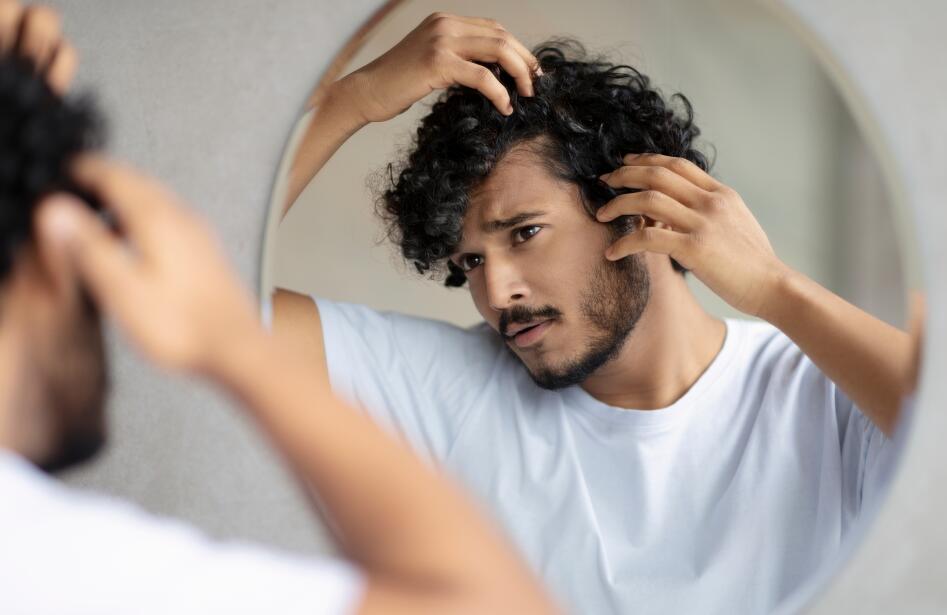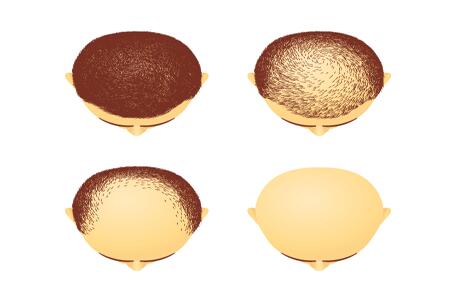-
Your concerns
Our articles to help you gain a better understanding
-
Our solutions
-
DUCRAY Dermatological Laboratories
Our articles to help you gain a better understanding

Men are widely affected by a type of hair loss known as androgenetic alopecia. The most common form of this male alopecia is baldness, the cause of which is primarily hormonal.
On a daily basis, hair loss affects men and women equally. The types of hair loss they experience, however, are different, as are the causes and consequences. In fact, androgenetic alopecia is more common in men (70% to 80% versus 29% to 42% for women*), whereas women are more widely affected by acute telogen effluvium and chronic telogen effluvium.
Alopecia in men is common and often appears between the ages of 30 and 40. That being said, it is not rare for this hormone-induced hair loss, which involves the androgen receptors found in the dermal papilla, to appear in younger patients.
It is interesting to note that hair loss in women is a condition that is heavily influenced by hormonal changes observed during the postpartum period and menopause. Specialists estimate that one-third, or even one-half, of women** will experience temporary hair loss following a pregnancy.
 Androgenetic alopecia: definition
Androgenetic alopecia: definitionThis medical and scientific term refers to diffuse hair loss that eventually leads to a reduction in hair density and whose origin is hormonal. Dihydrotestosterone (active metabolite of testosterone) stimulates the androgen receptors in the hair follicle. This results in the miniaturization of the hair follicle and the appearance of increasingly shorter, thinner hair.
Baldness, which is the most common form of androgenetic alopecia in men, is characterized by episodes of diffuse hair loss. Its onset and appearance mechanism is nearly always the same: in this case, hair loss is observed on very specific areas, on the hairline and temples, before spreading to the rest of the scalp.
Often hereditary, this hair loss affects men both young and old. Today, health professionals continue to struggle to manage this condition, and this despite there being two medicinal treatments (minoxidil and finasteride) with proven efficacy.
* Source: Blume-Peytavi et al., 2011; Norwood, 1975.
** Source: Grover and Khurana, 2013.

Solutions for all types of hair loss